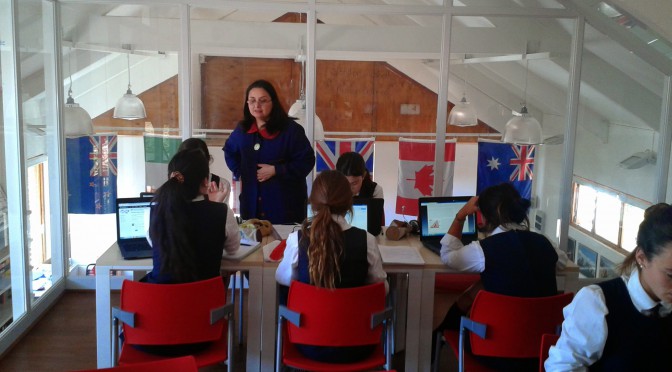On Monday, 11th grade Biology students from Ms. Ana Tapia’s class researched examples and evidence of evolution, using a variety of audio-visual web resources, including documentaries, high-resolution photographs of fossils, university web pages, and scientific articles. Below, read some of their reports, and check out the pictures!
“The mammoth DNA supports the theory of Darwin because the mammoth homoglobin has adaptations that make it much better ar surrender oxygen to the blood at cold temperaturas than the hemoglobin of the mommoth’s close living relatives, elephants. That may have helped mammoths survive the extreme climate of their very cold environment.”
-Maria Piedad Muñoz
“I think that Lucy is the best evidence of the evolution. This because it is in the middle between apes and humans. Darwin said that humans came from apes, so Lucy reafirms that theory. Although, Lucy´s remains are 40% complete, therefore scientists had to assemble the rest of the body.
This fossil has long arms, pelvis, spine, foot and leg bone. this means that Lucy had ape´s and human´s features.”
-José Tomás Ugarte
“The characteristics that Lucy had, showed an evolution because she had long arms like a modern monkey but it also had bones suited to walking upright. Apes can not walk upright
and humans do not have long arms like apes so this shows that there was an evolution.”
-Isadora Cavassa
“Archaeopteryx fossil shows evidence for evolution and for the Darwin´s theory because it provides conclusive proof that birds evolved from dinosaurs. Archaeopterix was the earliest known bird and the first skeleton specimen ever found, its an evolutionary link between dinosaurs and birds because it had feathers like a bird but teeth, claws and a bony tail like dinosaurs. Scientists investigate this bird´s brain and determinated that they had the sight, balance and coordination necesary for flight, but although, it wouldn´t have been a powerful flapping flyer because it didn´t had a large breast bone
and associated muscles like modern birds.
This speciments could have been lived in the Altmül valley in Bavaria, Germany where some fossils have been found. This environment was suptropical, warm and usually covered by a shallow and often stagnant coastal lagoon.”
-Josefina Spuhr



